A Prize Discovery: The Story of the Tullis Brothers
Recently, the Lighting the Past Team came across this inscription in a Greek language textbook:

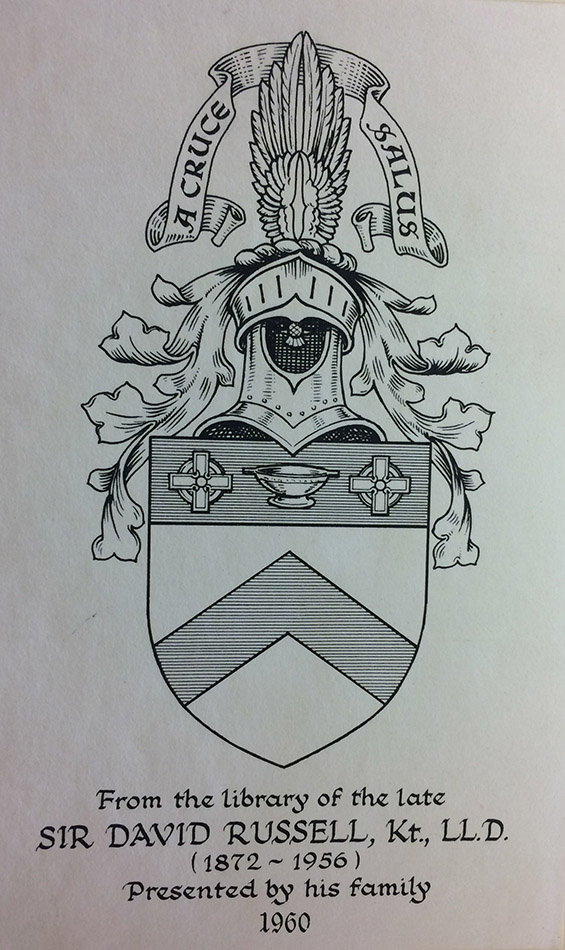
The discovery of this annotation provides a perfect opportunity to highlight the connections between William Tullis and his brothers and the University of St Andrews. As illustrated by the bookplate, this text was gifted to St Andrews University Library by the Russell family in 1960 from the library of Sir David Russell (1872-1956). The Russell family were connected to the Tullis family through the marriage of William Tullis and Agnes Russell (1846) and also when brothers Arthur and David Russell joined the Tullis family in paper making at their mill in 1874.
Robert Tullis (1774-1831) was a printer, bookseller and paper maker. He founded the Tullis Press in Cupar in 1803 and established a paper making firm in 1809 when he purchased the lease of Auchmuty Mill. He was elected the official printer for the University in 1808 and printed the 1826 edition of the University Library Catalogue. His three sons all attended St Andrews University.
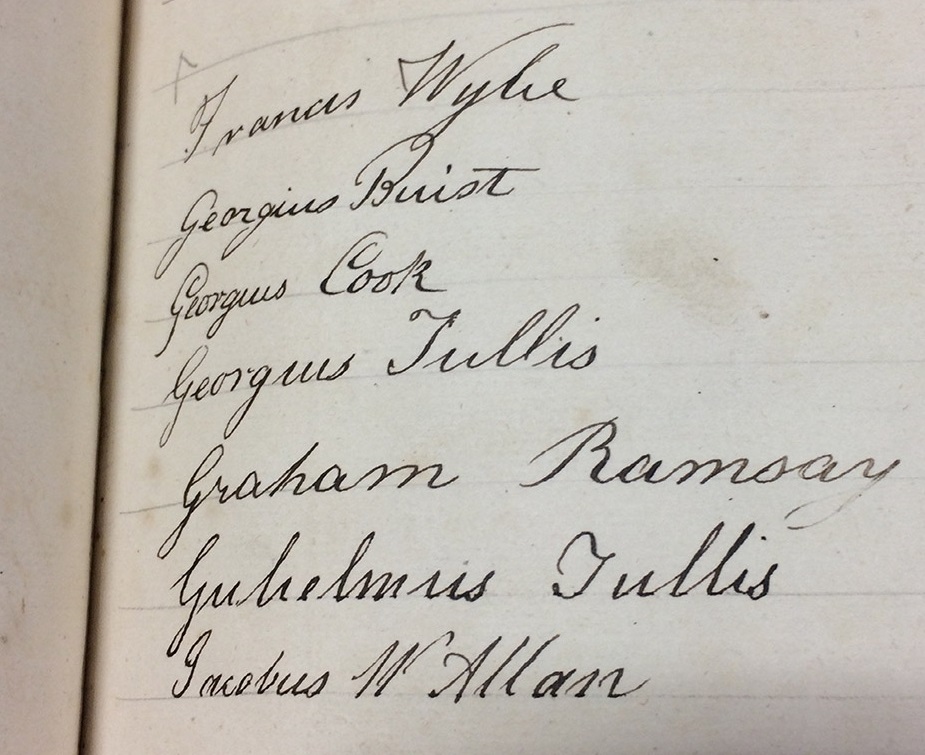
The eldest son, George Smith Tullis (1805-1848) was a student in United College between 1820/21 and 1823/24 and would later take over his father’s printing business in Cupar. He was awarded the same position and title of University printer as his father when his father died in 1831.
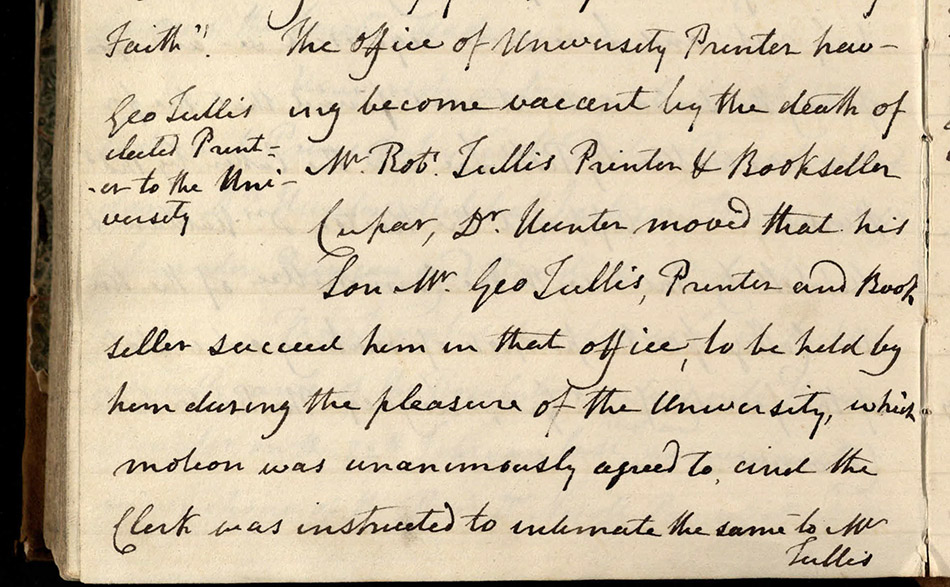
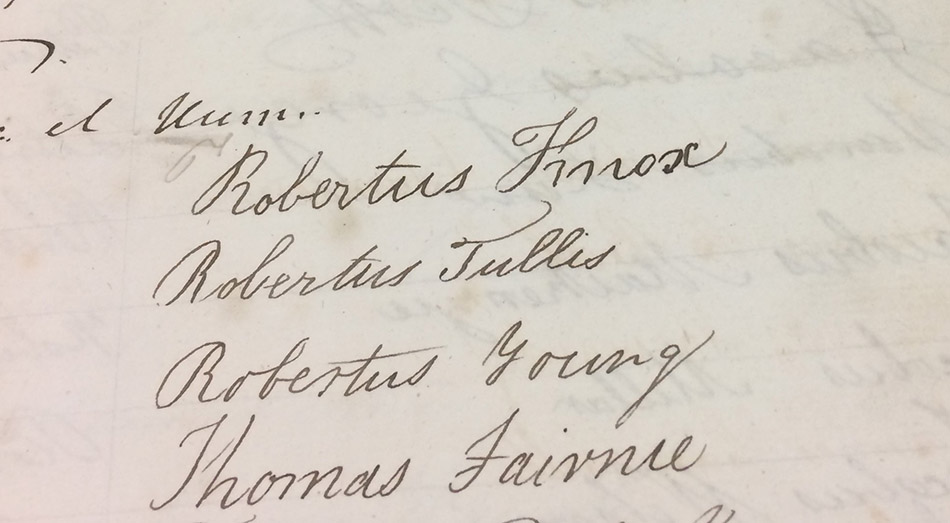
The youngest son, Robert Tullis (1813-1839) was a student from 1827/28 to 1829/30 and was awarded the Cupar Burgh bursary in 1827. He went on to join his brother William as partner in the paper making firm after his father bequeathed him and William joint shares in the Auchmuty paper mill. He sadly died at the young age of 25.
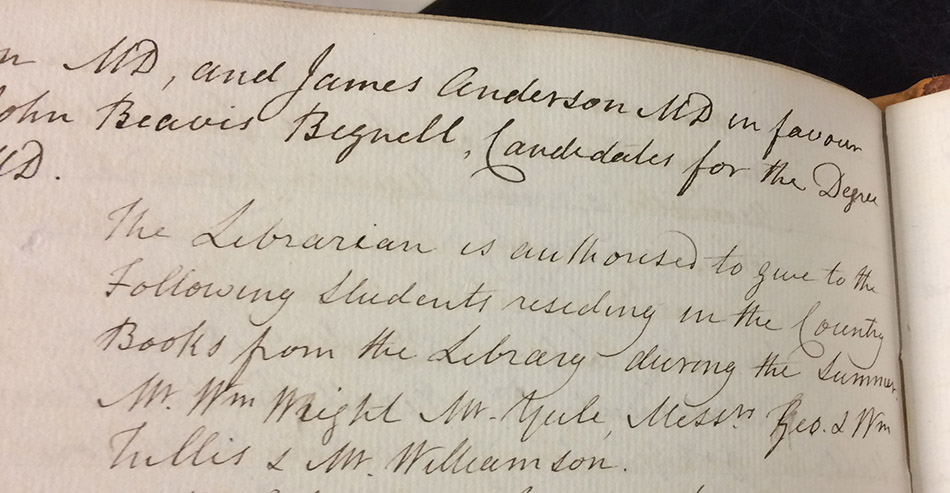
The middle son, William Tullis (1807-1883) was a student from 1820/21 to 1822/23. Also a recipient of the Cupar Burgh bursary, he, and his brother George, appear in the minutes of Senatus in 1822 in a list of students permitted to borrow books from the University Library over the summer term. His dedication as a student is further revealed by his student record. Within the Tullis Russell paper mill collection there are several of William’s class certificates which show him to be an exemplary student. The certificates are for classes in Moral Philosophy, Humanity, Logic and Rhetoric, Mathematics and Greek, which explains the inscription and ownership of the Greek text discovered by Lighting the Past.
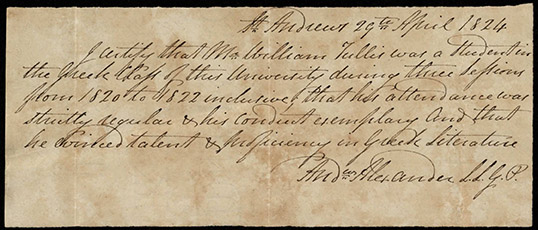
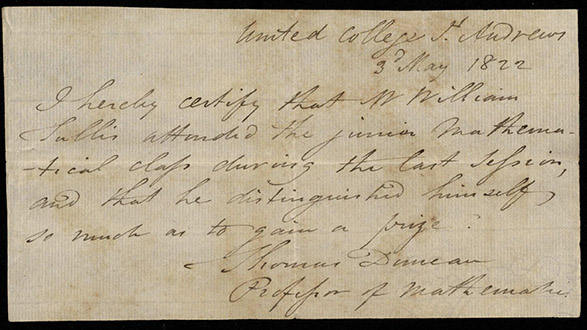


In Mathematics, Professor Thomas Duncan praised William as he ‘distinguished himself so much as to gain a prize’. William would continue to distinguish himself by presenting to the University in 1876 the sum of £700 to establish an annual Tullis Prize in Mathematics. A surviving example of the Tullis medal has been recently discovered in the papers of Ronald Cant (UYLY912), whose father Alan Cant received the award in 1886/87.
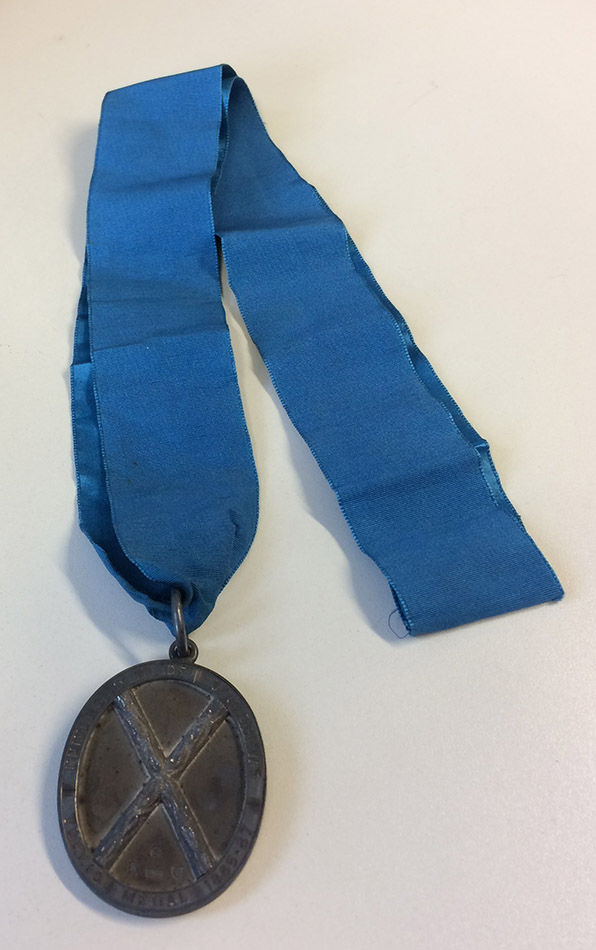
William’s generosity also extended to Madras College where the Tullis Medal was awarded to the Dux in Mathematics. Letters from William Carstairs to William include possible designs for the medal in 1870.

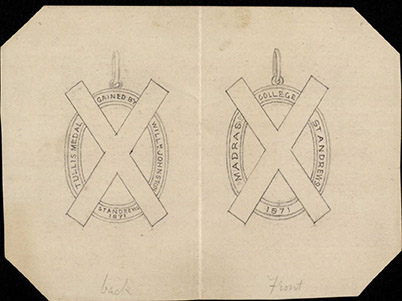
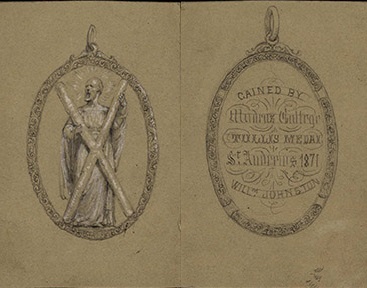
While William played in an important role in expanding and developing the paper mill business he also maintained an active intellectual and political life. It has been said that the home of William Tullis and his wife Agnes at Rothes House was something of a ‘political salon of the Liberal party’.1 William was a Liberal activist and even wrote a small book on the Law of Entail and Primogeniture. His personal papers include letters from William Sharman Crawford MP discussing the system of entails and complete suffrage and from John Bright of the National Anti-Corn Law League (ms38973/TF/2/1).
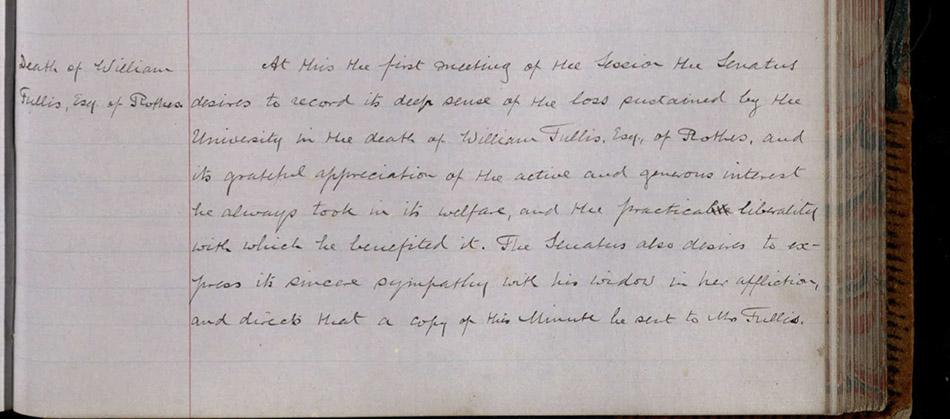
William died in 1883 and his death is noted in the minutes of Senatus with an acknowledgment of ‘grateful appreciation of the active and generous interest he always took in the welfare and practical liberality with which he benefited’ the University.
Sarah Rodriguez
Tullis Russell Project Archivist
- C.D.M. Ketelbey, Tullis Russell: the history of R. Tullis & Company and Tullis Russell & Co. Ltd., 1809-1959, (Markinch, 1967), p 89.
Curiosity. I have an envelope dated 1880 addressed to Robin L Tullis .It has 2penny blue and a 1 penny Venetian red(both of no great value) and I was looking for some interesting info. to put along side it. Which I now have.